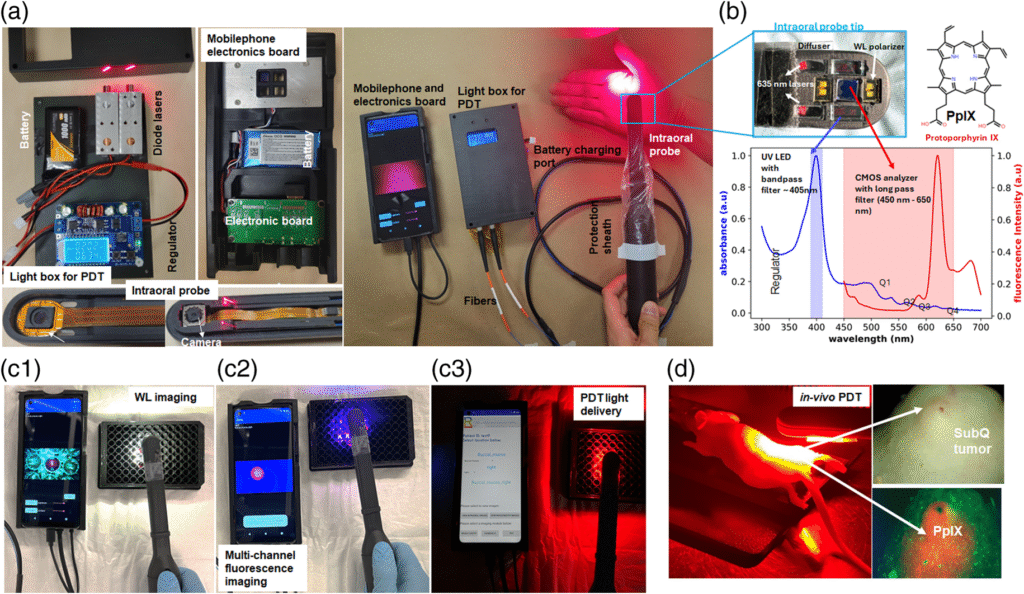In regions where oral cancer is common and access to care is limited, early detection and treatment are often out of reach. To address this, researchers have developed a compact, low-cost intraoral device that combines diagnostic imaging with photodynamic therapy (PDT)—enabling clinicians to identify and treat early-stage oral cancer in a single visit. The device, described in Biophotonics Discovery, uses a smartphone-coupled probe equipped with LEDs and filters to capture white-light and fluorescence images of suspicious lesions. It also includes laser diodes that activate a light-sensitive compound (PpIX) in cancerous tissue, destroying abnormal cells while sparing healthy ones.
Preclinical tests showed that the device could detect PpIX fluorescence up to 2.5 mm deep and deliver effective therapy with tumor cell death extending to 3.5 mm. Real-time monitoring of fluorescence allowed researchers to track treatment progress and adjust dosing on the fly—an essential feature for low-resource settings where advanced infrastructure is lacking.
The system also uses ratiometric imaging to distinguish cancerous tissue from healthy areas, improving accuracy in complex environments. In animal models, tumors treated with the device shrank significantly compared to controls, and histological analysis confirmed deep tissue response.
Designed for affordability and portability, the device could revolutionize oral cancer care in underserved regions, particularly in South Asia where the disease is prevalent. Future work includes clinical trials and refining the technology for broader deployment. By integrating diagnosis and therapy into a single handheld tool, the device offers a streamlined, accessible solution for one of the world’s most pressing cancer challenges.
Article in SPIE: Handheld device enables imaging and treatment of oral cancer in low-resource settings
Abstract in Biophotonics Discovery: Enabling point of care optical diagnostics and treatment of oral lesions in resource-limited settings: preclinical development and evaluation of a low-cost theranostic intraoral device for image-guided photodynamic therapy

